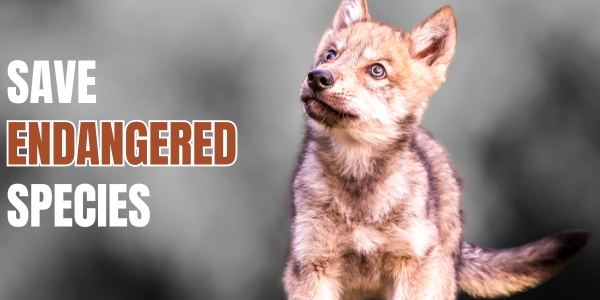Photo credit: Keith Williams
Canada lynx (Lynx canadensis) | ESA status: threatened
Canada lynx
Canada lynx are iconic wild cats of high-elevation, boreal, subalpine, and hardwood forests in North America. These gorgeous felines are well known to scores of ecology students, who study their specialized predator-prey relationship with snowshoe hares.
The lynx is a medium-sized cat (19 to 22 pounds) with long legs, large paws, long tufts on its ears, and a short, black-tipped tail.
Male lynx establish territories that typically encompass the ranges of multiple females and vary in size from 10 to almost 100 square miles, depending on habitat quality and prey availability. Females give birth in spring to one to four kittens with beautiful, icy blue eyes. Kittens stay with their mother for the first year while they learn to hunt.
The lynx is often confused with the more widely ranging bobcat (Lynx rufus). The lynx is slightly larger than the bobcat, has grayish (rather than reddish) fur, less-prominent spots, and a shorter tail. Bobcats also lack the lynx’s conspicuously long ear tufts.
Canada lynx diet
Lynx are heavily dependent on snowshoe hares. Both species are strongly associated with high-elevation forests that have cold, snowy winters. Lynx have acute hearing, and their large, furry paws act as snowshoes, allowing the cats to track and capture the swift snowshoe hares in deep snow. These same qualities also give the lynx a competitive advantage over other predators, such as coyotes, foxes, and bobcats.
What are the threats to Canada lynx?
Snowshoe hares prefer young forests with brushy understories, while lynx need old-growth forests with downed trees for denning and raising young. Forests comprising young and old growth, or “matrix forests,” are uncommon, and are threatened by logging, unnatural fire, and climate change.
Intensive trapping has depleted lynx populations. Habitat loss and degradation have confined the species to limited areas in the lower 48 states (the Northeast, Upper Great Lakes, the Northern Rocky Mountains, the Kettle and Wedge mountain ranges in Washington, the North Cascades and the Southern Rocky Mountains).
What WildEarth Guardians is doing to protect the Canada lynx
Canada lynx were federally protected as a “threatened” species in 14 states in 2000. New Mexico was originally not included on the list, but as a result of efforts by Guardians and partners, lynx are now protected wherever they are found. Guardians and partners continue to fight for critical habitat designation for lynx in the southern Rockies. We are also working to remove deadly traps and pesticides from the landscape so lynx will be free to safely roam.
Historical Significant Actions
Washington State lists lynx as “State Endangered” December 2016
Idaho ordered to restrict trapping to protect lynx January 2016
Montana restricts trapping to protect lynx July 2015
WildEarth Guardians files suit against the U.S. Fish and Wildlife Service for failing to list the lynx in New Mexico September 2010
Wildlife Press: Canada lynx
Nez Perce-Clearwater Revised Forest Plan fails wildlife, climate, and the public
Conservationists demand changes during three-day objection meeting
Read more >